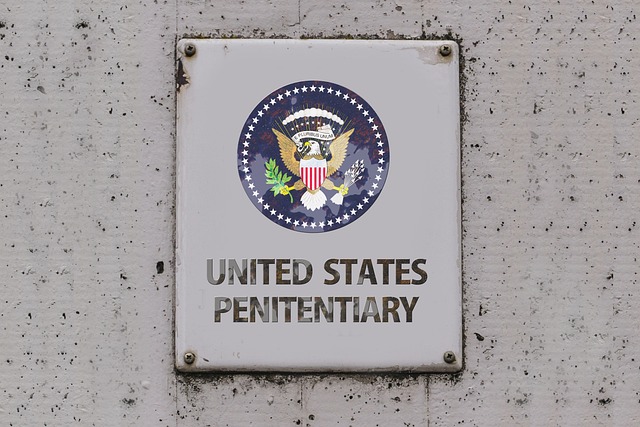Millennial DUI Awareness Campaigns leverage advanced breath testing (BAL) technology to combat impaired driving among young adults. By utilizing data-driven strategies, interactive media, and peer influence, campaigns foster responsible drinking habits through education and community engagement, aiming to reduce DUI incidents and save lives.
In today’s digital age, understanding blood alcohol level (BAL) testing is crucial for effective millennial DUI awareness campaigns. This guide breaks down complex concepts into digestible terms, ensuring accurate results that drive real change. We explore modern technology enhancing BAL detection methods and delve into educating young adults, presenting challenges and opportunities unique to this generation. By implementing successful strategies, we can significantly reduce Millennial DUI incidents, fostering safer communities.
- Understanding BAL Testing: A Millennial's Guide
- DUI Prevention: Targeting Young Drivers Effectively
- Accurate Results: The Cornerstone of Awareness Campaigns
- Modern Technology: Enhancing Blood Alcohol Levels Detection
- Educating Millennials: Challenges and Opportunities
- Strategies for Successful DUI Prevention Programs
Understanding BAL Testing: A Millennial's Guide

BAL testing, or Breath Alcohol Testing, is a crucial component in ensuring accurate results for Millennial DUI awareness campaigns. As young adults navigate their lives and often face social pressures, understanding these tests is essential. BAL testing measures an individual’s blood alcohol content (BAC) by analyzing exhaled breath, providing a quick and reliable indicator of intoxication. This modern approach is a far cry from the traditional methods used in past decades.
Millennials, being tech-savvy and conscious of their health and safety, should appreciate the advancements in DUI prevention. BAL testing offers a non-invasive and efficient way to detect alcohol consumption, making it a game-changer in awareness campaigns. By understanding these scientific processes, millennials can actively participate in keeping themselves and their communities safe during social gatherings or leisure activities involving alcohol.
DUI Prevention: Targeting Young Drivers Effectively

DUI prevention strategies must evolve to effectively target young drivers, a demographic often at higher risk for impaired driving. Millennial DUI awareness campaigns can play a pivotal role in addressing this pressing issue. By utilizing innovative methods and tailoring messages to resonate with younger audiences, these initiatives can significantly impact behavior change.
Focusing on educational programs and community outreach within universities and colleges can help foster a culture of responsible drinking. Engaging social media platforms and leveraging peer influence are additional strategies that prove effective in reaching young drivers. Additionally, partnerships between law enforcement and local organizations dedicated to road safety can enhance the impact of these campaigns, ultimately contributing to a safer driving environment for all.
Accurate Results: The Cornerstone of Awareness Campaigns

Accurate results from BAL testing are paramount for effective Millennial DUI awareness campaigns. With a significant portion of DUIs involving young adults, tailored and data-driven initiatives are essential to reaching this demographic. When test outcomes are precise, campaign strategies can be finely tuned to address specific risk factors among Millennials, such as impaired judgment due to peer pressure or overestimating their driving abilities after consuming alcohol.
This focus on accuracy enables public safety advocates to create targeted messages that resonate with Millennials, fostering a deeper understanding of the consequences of drunk driving. By leveraging precise BAL test results, awareness campaigns can move beyond generic warnings, presenting real-life scenarios and personal stories that hold attention and drive home the importance of responsible drinking and designated driving among this age group.
Modern Technology: Enhancing Blood Alcohol Levels Detection

Modern technology has significantly enhanced the detection of blood alcohol levels (BALs), playing a crucial role in initiatives like Millennial DUI Awareness Campaigns. Advanced devices, such as breathalyzers with improved accuracy and data-logging capabilities, allow law enforcement to gather more reliable evidence, ensuring fair trials. These tools are essential for educating young drivers about the dangers of impaired driving, as they provide tangible results that can deter future risky behaviors.
Additionally, technological advancements enable faster testing, reducing wait times at checkpoints. This promptness is vital for maintaining public safety during events where alcohol consumption may be prevalent. By integrating these innovations into DUI prevention strategies, campaigns like Millennial DUI Awareness can better educate and enforce responsible drinking habits among millennials.
Educating Millennials: Challenges and Opportunities

Millennials, born between 1981 and 1996, present unique challenges for alcohol testing and safety campaigns. This generation, often characterized by digital nativity and diverse cultural backgrounds, requires tailored educational approaches. Traditional methods of spreading awareness about issues like drunk driving (DUI) might not effectively reach Millennials. Engaging them demands innovative strategies that leverage their comfort with technology and social media.
Millennial DUI Awareness Campaigns can utilize digital platforms to create interactive content, share real-life stories, and organize virtual events. By incorporating educational games, videos, and peer testimonials, these campaigns can captivate Millennials and instill the dangers of drinking and driving. Furthermore, leveraging Millennial values like social responsibility and community involvement can foster a sense of shared purpose in promoting safer behaviors.
Strategies for Successful DUI Prevention Programs

Millennial DUI Awareness Campaigns play a pivotal role in successful DUI prevention programs. These campaigns must be tailored to engage younger audiences, leveraging digital platforms and innovative strategies. Social media, peer-to-peer education, and interactive events can effectively communicate the risks of impaired driving. By incorporating real-life stories, personal testimonials, and data visualization, these campaigns can create a powerful impact.
Additionally, collaboration with local communities, law enforcement agencies, and advocacy groups is essential. Such partnerships enable joint initiatives, resource sharing, and targeted interventions. Regular training for police officers on Millennial DUI Awareness ensures consistent messaging and increased scrutiny during traffic stops. Together, these strategies foster a culture of responsible drinking among millennials, ultimately reducing DUI incidents and saving lives.
In conclusion, achieving accurate results in BAL testing is paramount for effective Millennial DUI awareness campaigns. By understanding the nuances of BAL testing, targeting young drivers specifically, leveraging modern technology, and educating Millennials on the challenges they face, we can significantly enhance DUI prevention programs. These strategies ensure that our efforts resonate with this demographic, fostering a culture of responsible drinking and safer roads for all.






